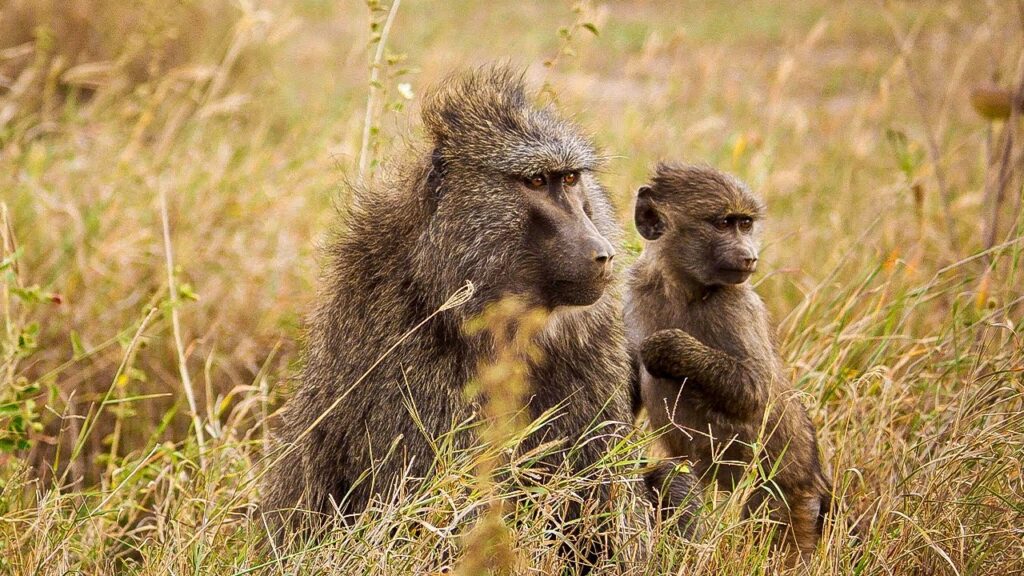
Baboons are highly social animals, living in troops that can number from a few dozen to over a hundred individuals. Each troop is organized in a strict hierarchy, with dominant males holding leadership roles and females forming close-knit family bonds. This structure helps the group work together in times of danger. When predators like leopards or hyenas approach, the males will position themselves at the troop’s perimeter, ready to fight if necessary, while the females and young gather in the safety of the center.
Food plays a central role in baboon life, and their adaptability has allowed them to thrive in varied landscapes. Unlike other primates that rely on specific diets, baboons are omnivorous opportunists. They eat fruits, seeds, roots, insects, and even small animals. This diverse diet enables them to survive in areas where resources can be scarce, but it also means they often cross paths with humans, raiding crops or scavenging from settlements. These encounters can lead to conflict, yet they also highlight the baboons’ intelligence and resourcefulness.
Young baboons spend much of their day playing, climbing trees, and chasing one another through the grass. These playful interactions aren’t just for fun; they help the juveniles develop physical skills and social bonds that will serve them throughout their lives. Mothers are incredibly protective of their infants, carrying them on their backs or clinging to their bellies as they travel. The bond between a mother and her young is one of the strongest in the troop.
Baboons also display complex communication skills. They use a variety of vocalizations, facial expressions, and body postures to convey messages. A soft grunt can signal reassurance, while a sharp bark warns of danger. Grooming is another vital form of communication, reinforcing social bonds and reducing tension within the group. By picking through each other’s fur, baboons not only remove parasites but also express trust and loyalty.
Life in East Africa’s wild landscapes is not without challenges. Droughts can limit food and water availability, forcing troops to travel great distances. Predators remain a constant threat, and competition between males can be fierce. Yet baboons are masters of adaptation. Their intelligence, cooperation, and flexibility allow them to overcome obstacles and continue thriving in their natural environment.
Researchers studying these primates gain valuable insights into animal behavior and social organization. Observing how baboons navigate challenges—whether finding food, protecting their young, or resolving conflicts—offers clues about the evolution of complex societies, including our own.


